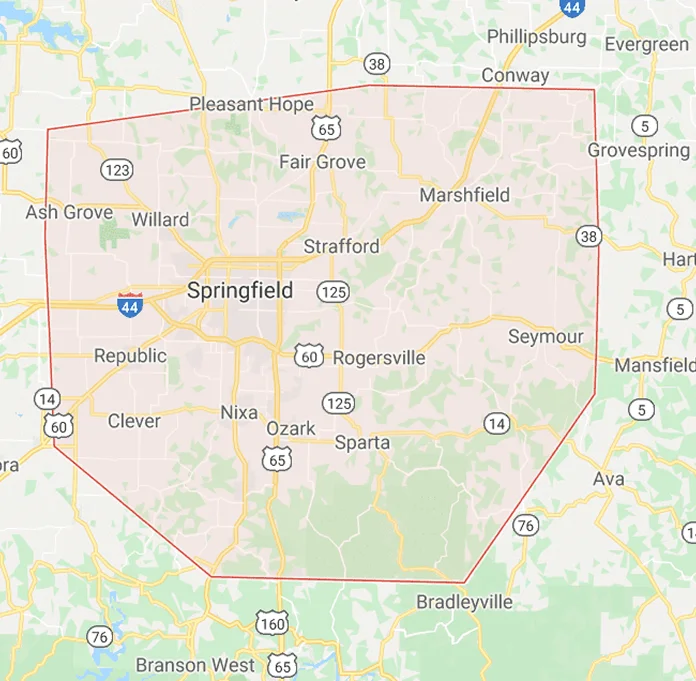If you own trees in Missouri, it only takes a good thunderstorm to get you wondering about whether your trees are going to stand the test of time. It is really amazing to see how much pressure a healthy tree can take from the wind before it gives way! But what if it does give in whole or part? Is your property or life in danger? Are there signs that you can read in a tree to help you decide whether your tree is a hazard?
Trees have signs of weakness and failure that can typically be read fairly easily if you know what to look for. Here is a list of some things we look for when we are calculating the risk of a tree failing while we are working in it.
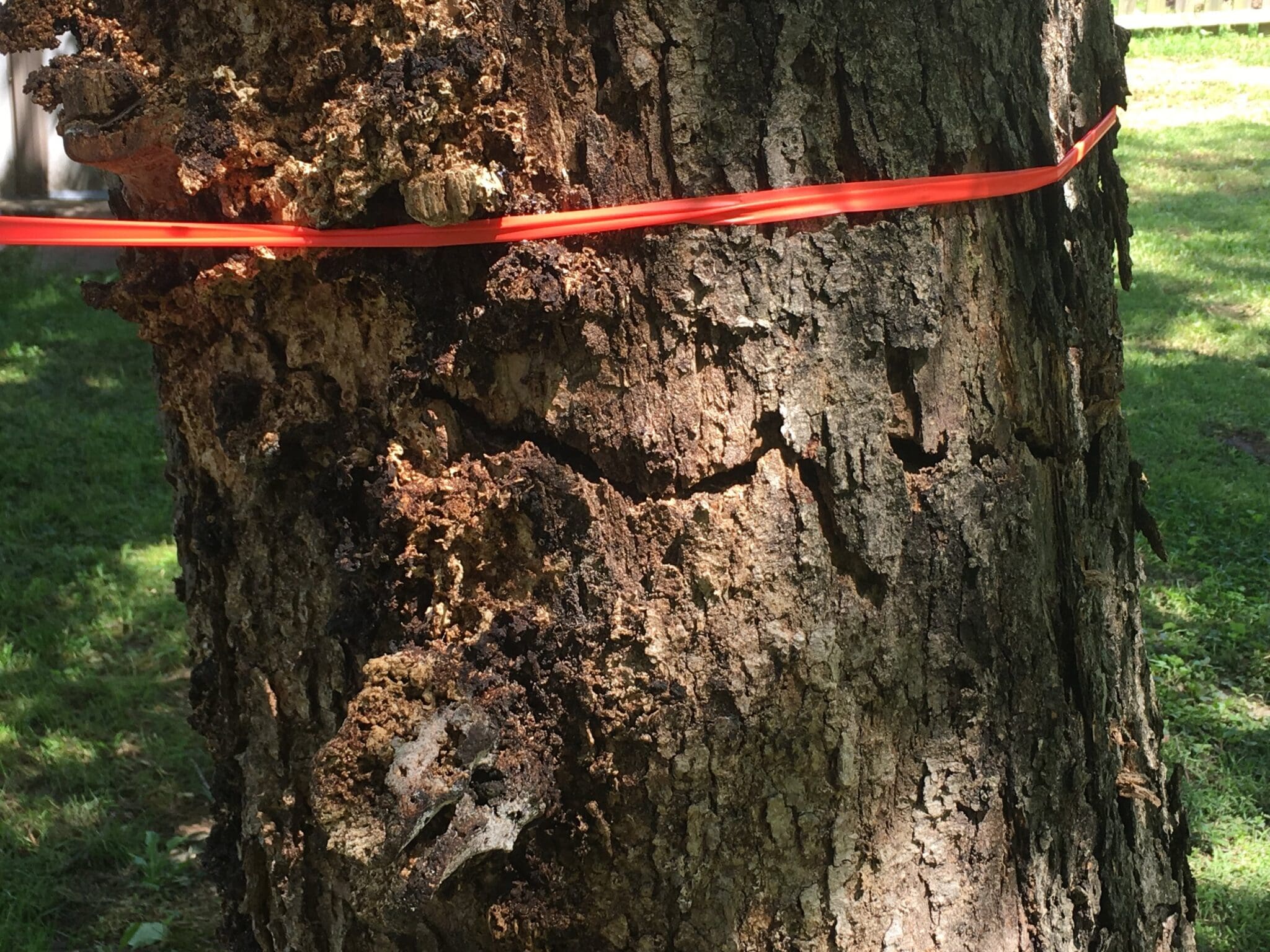
Cracks in the tree
Deeper cracks indicate places where a tree is stressed. The deeper the crack the more chance you are at risk of the tree or branch falling. One of the more precipitous trees we found cracks in was literally on its last legs – a gentle breeze would have pushed this tree over. Thankfully the homeowner had us come out to estimate the tree when they did because they were probably within days of this tree falling on their house. In this case, we had to strap the tree to others for support before removing it because the least amount of stress would have sent it toppling.
Dead branches
A dead branch here or there is not a big deal, but when you see a whole portion of the tree losing its leaves while the rest of the tree is maintaining healthy leaves, it is like that the roots have been damaged, or that there is something seriously wrong with the tree. We see this often when someone has done work in the ground to lay a pipe that runs next to the tree. Often the whole side of the tree will die as a result of the roots being cut.
Holes in the trunk
Holes in the trunk indicate that a branch has rotted into the tree, and is likely to create weakness in the branch or stem, as pictured to the left. Hollow places in trees ultimately very likely leads to the downfall of the tree over time. One tree we serviced after a storm that knocked a huge limb onto a garage had holes in every stem and every major branch, and they acted like water spouts, funneling rain to holes lower in the trunk. Needless to say, that was an extremely hazardous job due to the instability of the tree. The longer you wait to deal with a situation like a hole in a tree, the harder the tree is to take down, and the more likely it is to cause damage or harm.
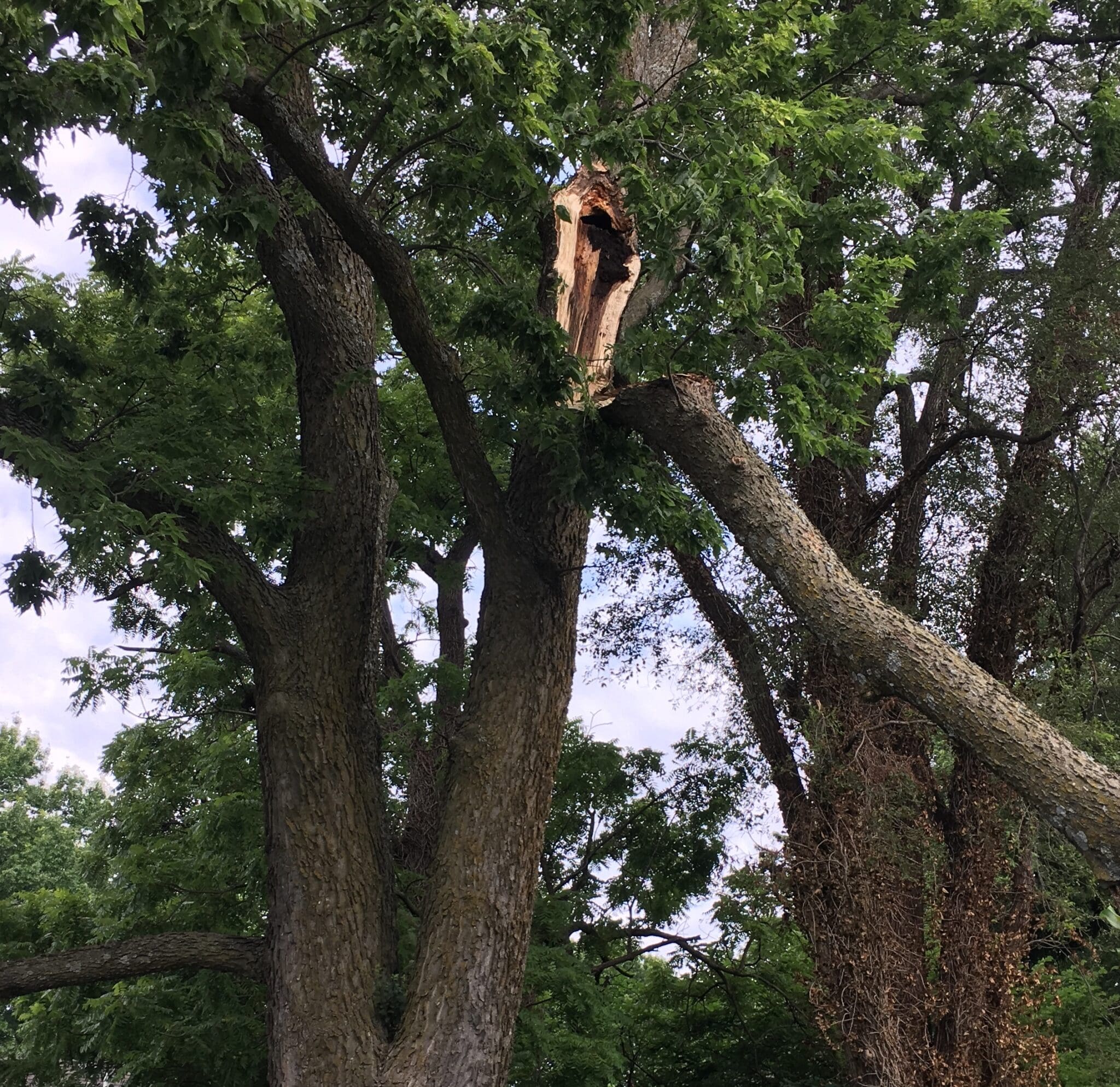
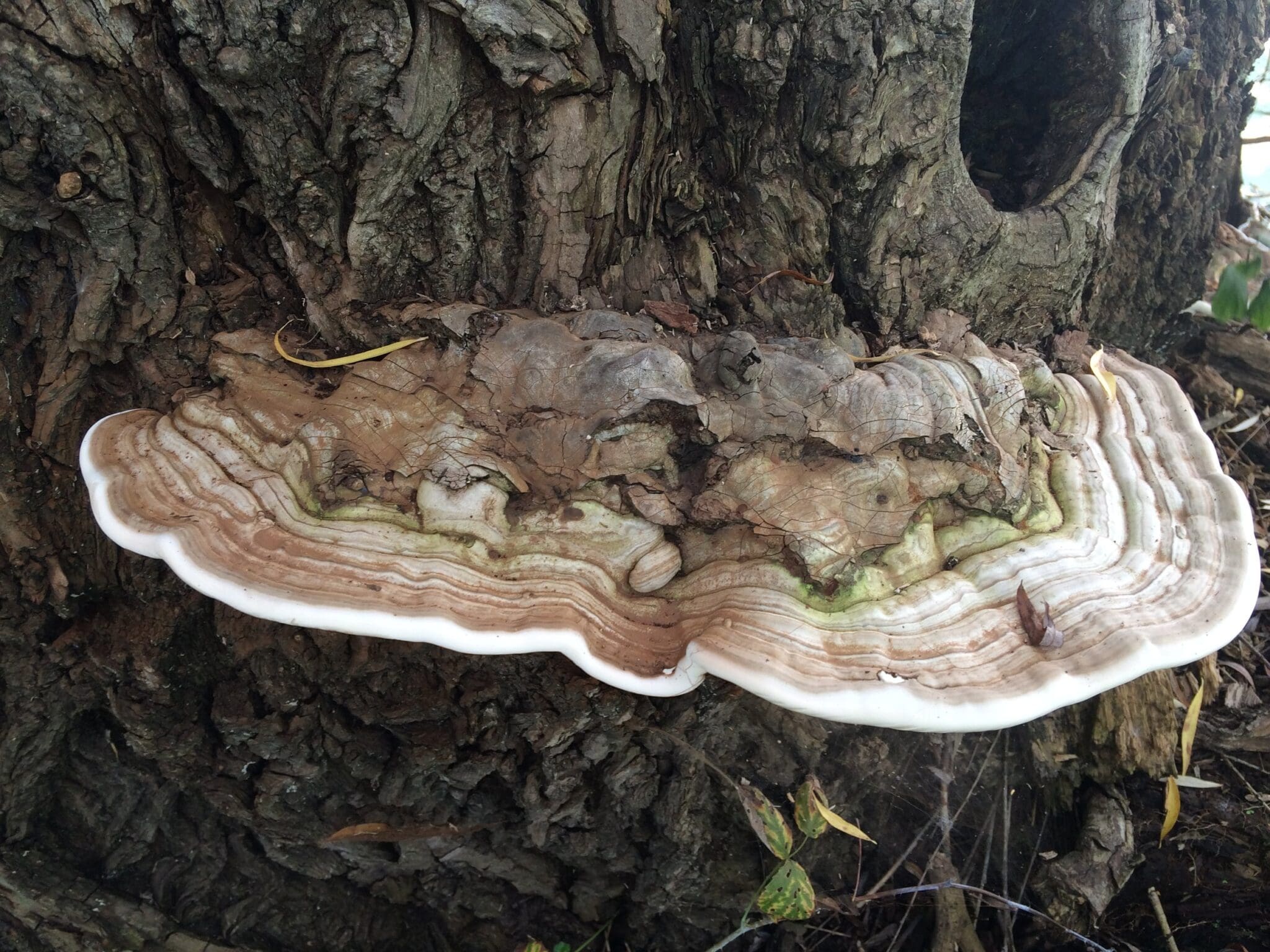
Places where the bark is falling off
If you see bark rotting off the tree, you should have the tree checked out. There is a good chance that the tree is dying, and may be further gone than you realize.
Soft or rotten wood
If you can easily poke a shovel into the tree and the bark and wood crumbles off, your tree is dying.
Fungus growing on the trunk of the tree
If you see mushrooms or other fungus growing on the trunk or major stems of your tree, even if it is near the ground, it is very likely your tree is dying and needs attention quickly.
The tree is visibly leaning more over time
If the angle that your tree stands at is slowly changing, that is an obvious and perilous sign that you need to get help. The roots of a tree can rot away to the extent that there is little holding the tree, and all it takes is a little pressure to cause the tree to fall. Also, the roots can be too shallow and not provide the support needed as the tree grows.
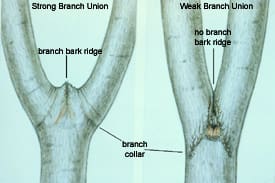
Branches that grow close together split in a ‘V’ instead of a ‘U’.
When a tree branches and its stems grow in separate directions, if they stay to close and grow into each other, they create ‘V’ shape where the bark from each stem grows into each other. This weakens the overall structure of the tree, and makes it much more likely that the stems may break at some point. (photo is courtesy of https://www.dec.ny.gov/lands/5293.html)
Tiny holes in the bark that indicate wood-boring insects are at work.
Some trees are especially susceptible to certain species of boring insects that attack living trees and spell their ultimate doom if not treated. A well-known example of this is the emerald ash borer, which mainly targets ash trees. It has become quite a nuisance in North America as the ash trees here seem particularly vulnerable to the beetle larvae. Keep an eye on the bark of your trees for small holes – if you see many, take action.
Taking Care of Business
Delaying the inevitable on a dying tree can result in damage to property, or even worse, harm to people. If you believe that your tree is dangerous, or headed in that direction, most tree companies, ours included, will come out and give a free consultation on the health of your trees, and an estimate for what needs to be done to improve the situation.

